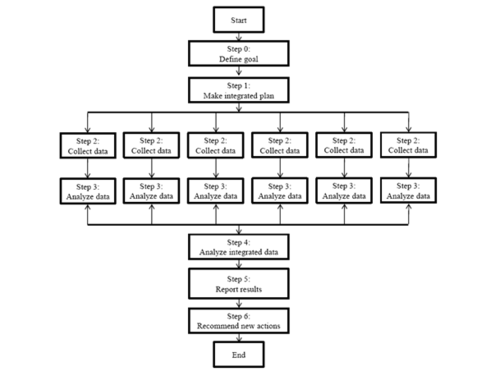Structural framework for integrated monitoring
- The text on this page is taken from an equivalent page of the IEHIAS-project.
The detail information for this framework is given in D64.1-Revised integrated monitoring report. It is available on INTARESE website.
In order to integrate data from multiple monitoring programs, we have developed a structural framework for it, namely Integrated Environment and Health Data (IEHD) framework (Figure 1).
Concepts and principles
It is well known that integrated usage of information from integrated environment and health monitoring programs can bridge the gaps between environment and human health. According, we propose an integrated environment and health data (IEHD) framework to demonstrate the steps on integrating usage of data from integrated environment and health monitoring programs. It can facilitate achieving the goals of greater efficiency and quality and of better-informed decisions, in ways that support specific information management needs.
Step by step plan
Step 0: define goal
In this step, the goal of data integration should be defined clearly from the start. It can help to make integrated plan in the next step.
Step 1: make integrated plan
In step 1, making an integrated plan can help to identify databases that are needed to collect in the next step and the source of data.
Step 2: collect data
In step 2, the data collection takes place. As mentioned above, data collection is determined by the research goal.
Step 3: analyze data
Before the data integration, it is necessary to analyze data for each individual database, including define data characteristics, format and process data, assess data usefulness and quality, at end analyze data.
Step 4: analyze integrated data
This step is one of the most important steps. It is a process to integrate multiple databases, data cubes, files, or notes. The data sets can be combined in different ways, based upon the issue under consideration
Step 5: report results
This step creates prototype output and generates reports. In general, tabulation, results from statistical analysis and map making are generally needed.
Step 6: recommend new actions
In this step, information for action you need to drive prototype results, to get stakeholder input, and to create mechanisms for access and dissemination, therefore the visualization tools (maps, interactive computer mapping interface) are necessary.
Figure 1 Structural components and steps of the IEHD and their interconnection.
